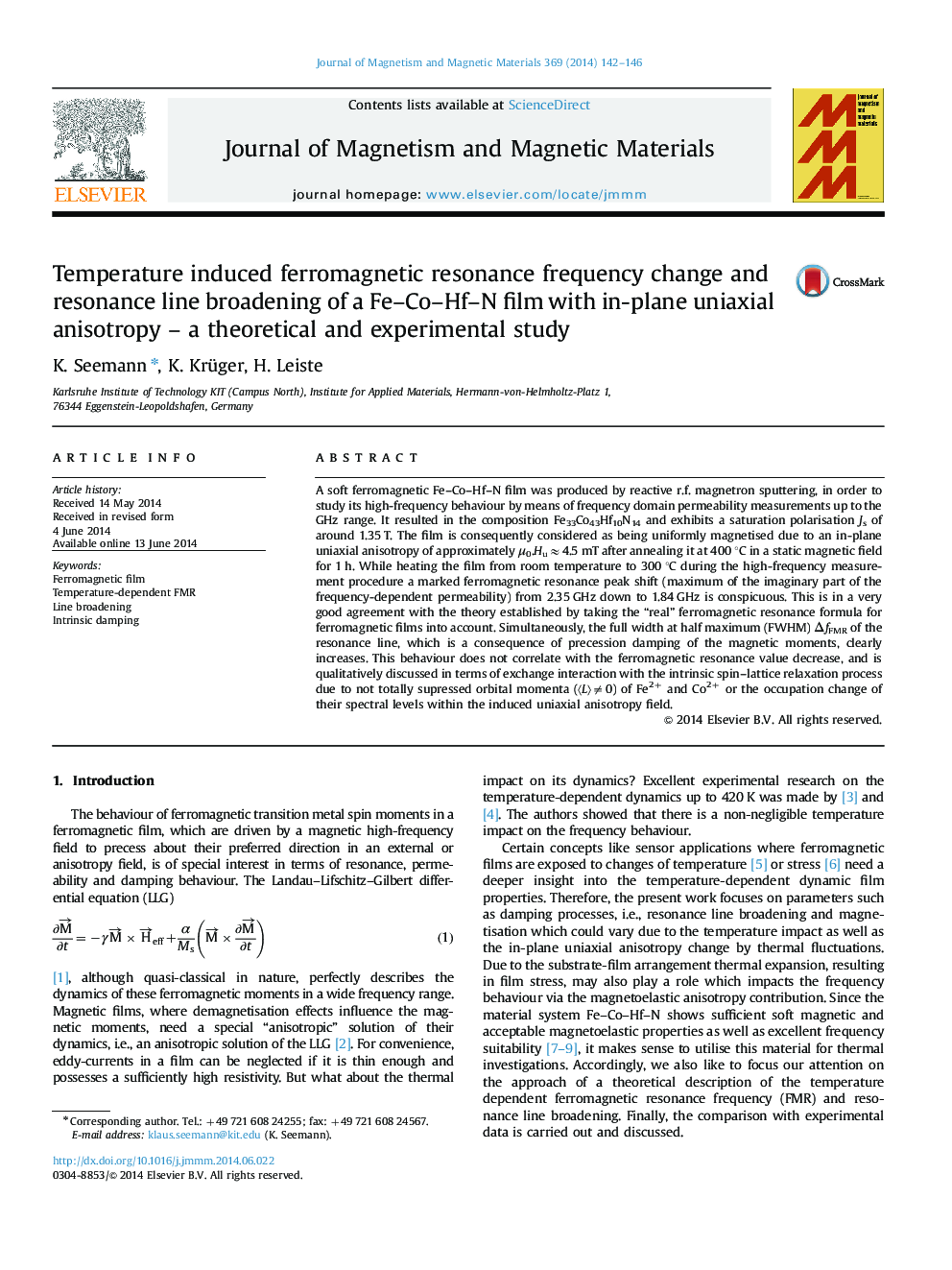| Article ID | Journal | Published Year | Pages | File Type |
|---|---|---|---|---|
| 1799535 | Journal of Magnetism and Magnetic Materials | 2014 | 5 Pages |
•Heatable strip-line permeameter up to 300 °C.•Theoretical description of the temperature dependence of FMR.•Measurement of the temperature-dependent permeability spectra.•Determination of the temperature-dependent resonance line broadening.
A soft ferromagnetic Fe–Co–Hf–N film was produced by reactive r.f. magnetron sputtering, in order to study its high-frequency behaviour by means of frequency domain permeability measurements up to the GHz range. It resulted in the composition Fe33Co43Hf10N14 and exhibits a saturation polarisation Js of around 1.35 T. The film is consequently considered as being uniformly magnetised due to an in-plane uniaxial anisotropy of approximately μ0.Hu≈4.5 mT after annealing it at 400 °C in a static magnetic field for 1 h. While heating the film from room temperature to 300 °C during the high-frequency measurement procedure a marked ferromagnetic resonance peak shift (maximum of the imaginary part of the frequency-dependent permeability) from 2.35 GHz down to 1.84 GHz is conspicuous. This is in a very good agreement with the theory established by taking the “real” ferromagnetic resonance formula for ferromagnetic films into account. Simultaneously, the full width at half maximum (FWHM) ΔfFMR of the resonance line, which is a consequence of precession damping of the magnetic moments, clearly increases. This behaviour does not correlate with the ferromagnetic resonance value decrease, and is qualitatively discussed in terms of exchange interaction with the intrinsic spin–lattice relaxation process due to not totally supressed orbital momenta (〈L〉≠0) of Fe2+ and Co2+ or the occupation change of their spectral levels within the induced uniaxial anisotropy field.
